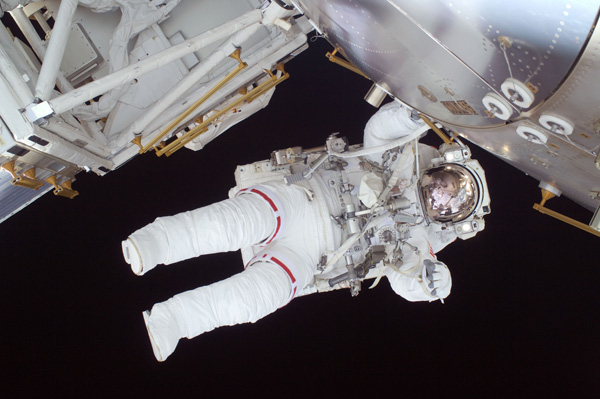Space healthcare enters a new era with challenges to overcome

[An astronaut. Photo Credit to Pxhere]
Two new studies are reshaping the conversation about healthcare beyond Earth, underlining that the future of space travel depends as much on medical innovation as on rockets and spacecraft.
The first is titled “Surgery in space: The ultimate frontier” in Experimental Physiology, which explores the challenges of performing surgical procedures in orbit.
The second is titled “A scoping review on microgravity medicine: Challenges and breakthroughs in space healthcare” in Space Habitation, which provides a broad overview of both the difficulties and the remarkable advances in microgravity health research..
As humanity prepares for longer journeys to the Moon, Mars, and beyond, one of the greatest challenges is not the rocket or the spaceship itself, but healthcare.
Unlike life on Earth, space presents extreme conditions that strain every system of the human body.
One of the central obstacles is the absence of gravity.
On Earth, gravity helps maintain bone density and muscle mass.
In microgravity, astronauts quickly lose both, while their circulation changes and fluids shift toward the head.
This can lead to vision problems and in some cases to Spaceflight Associated Neuro-Ocular Syndrome (SANS), a condition that can cause lasting eye damage.
At the same time, the immune system also weakens in space, making astronauts more vulnerable to infections.
These problems become even more serious on long missions to Mars, where communication delays of up to 20 minutes each way make real-time medical guidance from Earth impossible in emergencies.
To counter these risks, researchers are developing medical technologies designed for space.
Robotic surgery systems are being tested to allow life-saving procedures even when trained surgeons are not present.
In the future, compact surgical robots may operate semi-autonomously under artificial intelligence guidance.
At the International Space Station (ISS), scientists have already used 3D bioprinting to create human tissue in microgravity.
This technology could one day print skin grafts for burns or even parts of organs needed in emergencies.
Other innovations include biosensors and tissue chips, which act like miniature organs-on-a-chip to study how space conditions affect the body and to test new treatments.
Biosensors can track vital signs like heart rate, blood pressure, and hormone levels in real time, helping astronauts and mission control identify problems before they become dangerous.
Portable ultrasound devices are already standard on the ISS, diagnosing conditions from kidney stones to cardiovascular issues.
Advanced eye imaging tools like Optical Coherence Tomography are helping doctors understand and prevent vision problems caused by microgravity.
Exercise remains another key factor in protecting astronaut health.
On the ISS, astronauts use the Advanced Resistive Exercise Device (ARED) to simulate weightlifting and prevent muscle and bone loss.
Future missions may also use lightweight exoskeleton suits that provide constant resistance, allowing astronauts to strengthen their muscles even during daily routines.
Medicines are another critical issue.
Space alters how drugs are absorbed, and motion sickness can interfere with their effectiveness.
Scientists are now working on “astropharmacy,” a new field focused on producing and managing medicines directly in space.
This development is considered an essential step for missions without Earth supply.
Beyond technology, space medicine raises difficult ethical questions.
For example, if an astronaut on Mars needs emergency surgery, should the crew attempt a risky procedure with limited tools, or should they return to Earth, knowing that the delay could be fatal?
As private space travel grows, similar dilemmas will face non-professional astronauts, forcing agencies and companies to define acceptable levels of medical risk.
From early ultrasound tests on Soviet space stations to modern trials with robotic surgery and bioprinting, space medicine has advanced dramatically.
Yet, many hurdles remain.
Researchers stress that healthcare must become safer, more autonomous, and reliable if astronauts are to live and work far from Earth.
Space medicine is no longer science fiction.
It has become a necessary part of human exploration, ensuring that astronauts can survive and thrive as they venture deeper into the cosmos.

- Esther Kim / Grade 10 Session 9
- Lexington High School

![THE HERALD STUDENT REPORTERS [US]](/assets/images/logo_student_us.png)
![THE HERALD STUDENT REPORTERS [Canada]](/assets/images/logo_student_ca.png)
